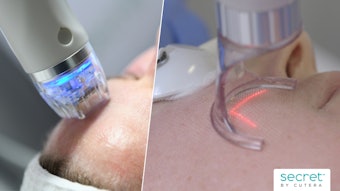
Two UK-based physicians, Emma Tierney, BMBS, and Gina M. Kavanagh, BMBS, shared a case report of a patient who experienced bilateral, symmetrical periocular depigmentation after eight years of repeated microblading of her eyebrows. The paper, published in the Journal of Cosmetic Dermatology (April 2021), recounts the case of a 28‐year‐old fair‐haired Lithuanian woman, who had a positive family history of autoimmune disease, but was otherwise systemically well and on no medication.
When the doctors examined the depigmented skin under Woods light, they found symmetrical, sharply demarcated, periocular depigmentation extending beyond both eyebrows and toward the medial canthi bilaterally. She also had a depigmented area on her right forearm.
She was diagnosed with vitiligo, arising from the koebnerization effect of repeated microblading. The patient was prescribed Tacrolimus 0.1% ointment and advised to practice daily sun protection and avoidance for the depigmented areas. She was also referred to the practice’s skin camouflage clinic and advised to stop microblading.
Koebner phenomenon is the development of isomorphic pathologic lesions in the traumatized skin of patients who have cutaneous diseases, most commonly psoriasis, lichen planus and vitiligo.
The authors noted that, while patients with psoriasis and vitiligo are often aware of the possibility of koebnerization with trauma, they might not necessarily consider cosmetic procedures to be “traumatic” and, therefore, should be counseled accordingly. “In addition, both of these autoimmune conditions can arise at any stage of life, with trauma potentially acting as the trigger,” they wrote.











